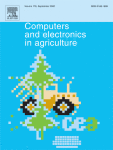lLeili Afsah-Hejri, Elnaz Akbari, ArashToudeshki, Taymaz Homayouni, Azar Alizadeh, Reza Ehsani,

https://www.sciencedirect.com/science/article/abs/pii/S0168169919318204
Terahertz (THz) waves are non-ionizing radiations with unique properties of both microwave and infrared. THz imaging and spectroscopy have been widely used for non-destructive testing, security screening, medical imaging, and quality control both in the agricultural and food industries. This review briefly describes the principles of how THz is generated, discusses its current agricultural applications and highlights the research gaps. THz spectroscopy has primarily been used for measuring the water content of plant leaves. Later, it was used to detect dead and live insects and pests in agricultural products. A combination of THz spectroscopy with chemometric methods, machine learning, and search algorithms helped scientists to construct classification models for discrimination of transgenic seeds, pesticides, harmful compounds, and poisonous plants. THz spectroscopy has also been used for soil inspection and detection of heavy metals and buried objects. In recent years, there have been significant technological improvements in developing THz sources and detectors, which enabled researchers to perform ultra-fast scanning and obtain high-resolution images. Using these new THz technologies, researchers can differentiate between fresh and old leaves, monitor the water status of plants, and estimate the crop yield. Although THz has proved to be a useful tool for non-destructive quality control of agricultural products and soil inspection, the technique has some limitations such as a low limit of detection (LOD) for pesticides, low spatial resolution, and limited penetration. It can also be influenced by the physical properties of samples such as particle size, and surface roughness. On the sensor side, more research is needed to improve the performance of THz systems, reduce THz sensor costs and ruggedness of the system for applications in agriculture. Also, more research is required to explore new potential applications of this technology in agriculture.

No comments:
Post a Comment